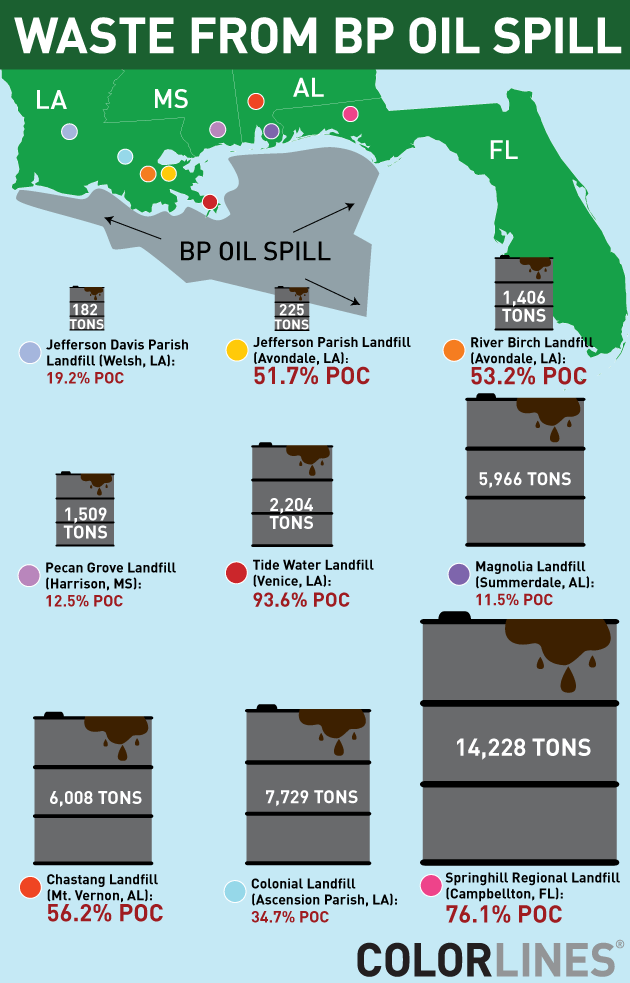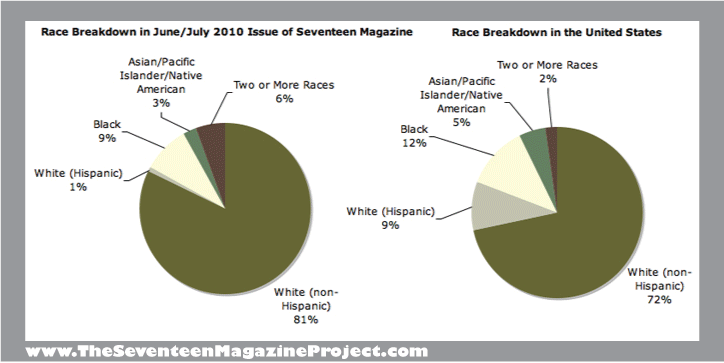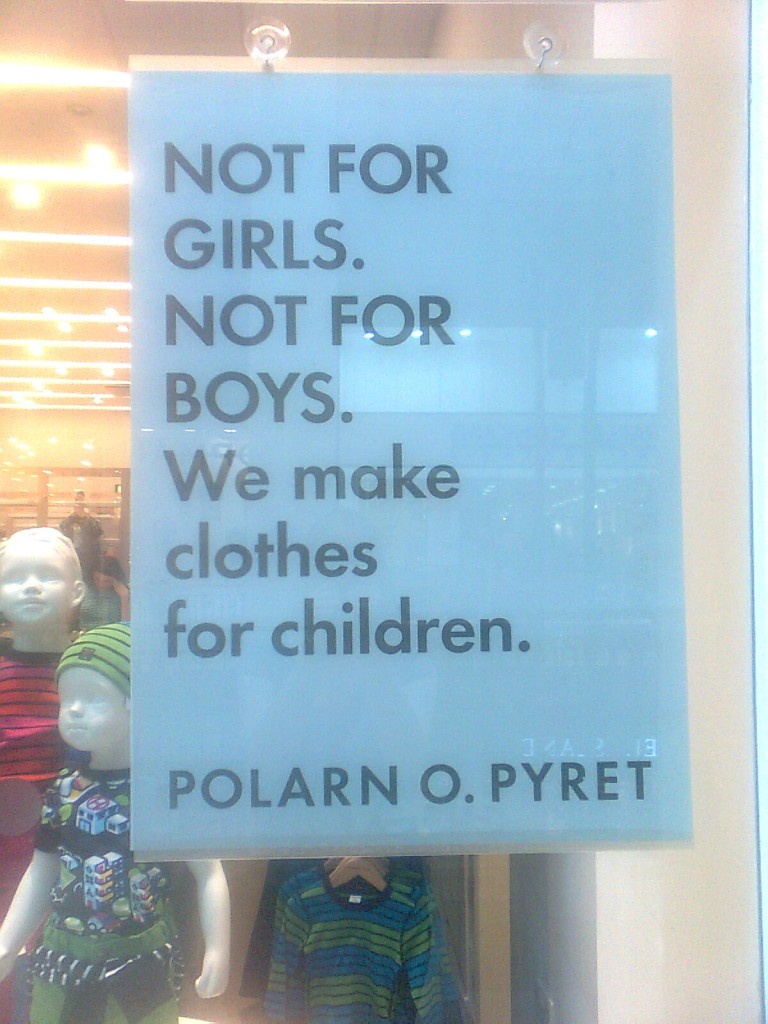Abby Kinchy sent in a link to a story at Colorlines about where waste from BP’s Gulf oil leak is being disposed of. Nine landfills have been approved as disposal sites. Robert Bullard, who studies environmental racism (particular how toxic waste dumps are often located in neighborhoods where racial/ethnic minorities are over-represented), posted his calculations of the racial makeup of the areas surrounding these nine landfills over at Dissident Voices. This map from Colorlines shows the location of the landfills, the amount of waste (which includes “oily solids,” waste from the cleanup, and so on) sent there, and the percentage of people living within a 1-mile radius that are People of Color:

I looked up the % who aren’t non-Hispanic Whites for each state (as of 2008), just to provide some context:
- LA: 38.1
- MS: 41.3
- AL: 31.6
- FL: 39.7
So if we compare the neighborhoods simply to the % of POC in each state, there are 3 in LA, 1 in AL, and 1 in FL that have an over-representation of non-Whites and/or Hispanics. On the other hand, 3 landfills are in neighborhoods with racial/ethnic minority populations significantly below the state overall. This, of course, is a very rough measure, since different racial groups are not evenly spread across a state. I just wanted to provide at least some background info.
According to a story at the Miami Herald, operators of the landfills say there is no danger:
…operators of the landfills insist the BP garbage is not unprecedented and is suitable for the type of landfills they’ve selected: disposal sites that take household waste, as well as “special waste” like contaminated soil. They note much of the waste is generated by the cleanup operation itself: soiled cleanup coveralls, gloves, sandwich wrappers and drink containers.
They point out that the BP waste makes up a tiny amount of the material taken to these landfills each day.
However, residents are concerned because the landfills are regular municipal landfills, not designated for toxic waste (since the EPA has not categorized the waste as hazardous). The Associated Press discovered problems, including a truck that was leaking and left a trail of tar balls behind it, waste in containers that were not lined with the protective liners BP is supposed to use, and uncovered containers, including one in a state park that was leaking liquid from the previous night’s rain. The AP concluded, “…the handling and disposal of oily materials was haphazard at best.”
I’m not an environmental toxicologist, so whether or not the waste is hazardous or whether the landfills can keep it from seeping into groundwater is, obviously, beyond my ability to judge. I’m more interested in perceptions of risk and confidence in experts. There are distinct differences by gender and race, with women and non-Whites expressing higher concern about environmental pollution/dangers and higher perceptions of risk compared to men and Whites. In fact, White men stood out from all other groups, rating potential environmental risks significantly lower than every other group. In the U.S., the gender gap is not explained by differences in scientific knowledge.
Given these differences, discussions of environmental safety and risk are often very contentious. Experts in both the private and public sector are disproportionately White men. Regardless of scientific knowledge, they may underestimate the risks involved compared to how women with the same scientific knowledge would (I don’t have similar data on how scientific knowledge might affect the racial gap). Science doesn’t just provide us with objective facts; researchers and those applying their findings must interpret the data. Individuals with the exact same level of expertise may interpret the same data on the hazardousness (or lack thereof) of a particular type of waste very differently, without anyone being intentionally deceptive or more clearly biased.
And not all groups have equal faith in science or, more specifically, the people engaged in scientific research. Scientists in the 1800s used supposed objective measures to prove that Whites were superior to non-Whites (and, thus, to justify slavery) and conducted the Tuskegee Syphilis Experiment, in which they allowed Black men to suffer and die of syphilis just to see what happened despite having a cure available. And the hazards of materials or pollutants often aren’t immediately apparent and may become clear only later (or may differ for adults and children, or due to cumulative exposure over time, etc.), which scientific analyses may not predict.
I’m not arguing that scientists studying the toxicity of the BP oil waste don’t have any useful information about whether or not it poses any danger to human health, or that data doesn’t help us come to more accurate judgments than we would if we didn’t take such information into account. However, in situations such as these that may be framed, particularly by scientists themselves, as an example of uninformed public opinion vs. fact-based expertise, the differences in interpretations and the fears of local residents despite assurances by researchers may be based in a number of factors that make the story, and conflicts over perceptions of risk, much more complex than it might at first appear.
Sources:
- James Flynn, Paul Slovic, and C.K. Mertz. 1994. “Gender, Race, and Perception of Environmental Health Risks.” Risk Analysis 14(6): 1101-1107.
- Bernadette C. Hayes. 2001. “Gender, Scientific Knowledge, and Attitudes toward the Environment: A Cross-National Analysis.” Political Research Quarterly 54(3): 657-671.
- Paul Mohai. 1997. “Gender Differences in the Perception of Most Important Environmental Problems.” Race, Gender & Class 5(1): 153-169.










